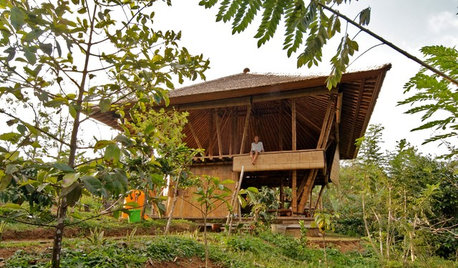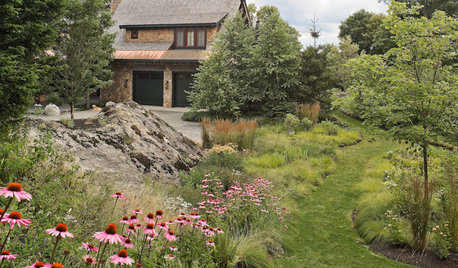Chico - self fertile or self sterile?
helike13
12 years ago
Related Stories

EDIBLE GARDENSWhy Grow Quince? For Beauty, Fragrance and Old-Time Flavor
Delightfully perfumed fruit and lovely spring blossoms make this apple and pear cousin worth a spot in the garden
Full Story
SAVING WATERXeriscape Gardens: How to Get a Beautiful Landscape With Less Water
Conserve water and make gardening much easier with the xeriscape approach’s 7 principles
Full Story
MOST POPULARMy Houzz: Open-Air Living in the Mountains of Bali
Community, jaw-dropping beauty and sustainability come together in a tropical paradise for a London expat
Full Story
EARTH DAYGrow a Beautiful Garden With Ecofriendly Greywater
Reducing home water waste means lower bills and a healthier planet. Here's how to set up a greywater home irrigation system that can help
Full Story
HEALTHY HOME6 Tips From a Nearly Zero-Waste Home
Lower your trash output and increase your quality of life with these ideas from a mom who did it to the max
Full Story
LANDSCAPE DESIGNNatural Swimming Pools: More Beauty, No Chemicals
Keep your skin and the environment healthy with a pool that cleans itself, naturally
Full Story
GARDENING GUIDES13 Risks to Take for True Garden Rewards
Go ahead, be a rebel. Breaking rules in the garden can lead to more happiness, creativity and connection with the earth
Full Story
GARDENING GUIDES10 Deer-Resistant Native Flowers to Plant This Fall
Learn about natives that embrace some kinds of wildlife but resist grazing deer
Full Story
FEEL-GOOD HOME21 Ways to Waste Less at Home
Whether it's herbs rotting in the fridge or clothes that never get worn, most of us waste too much. Here are ways to make a change
Full Story
FALL GARDENING7 Reasons Not to Clean Up Your Fall Garden
Before you pluck and rake, consider wildlife, the health of your plants and your own right to relax
Full Story





joshy46013
haweha
Related Professionals
Holly Springs Landscape Architects & Landscape Designers · Camas Landscape Architects & Landscape Designers · Paradise Landscape Architects & Landscape Designers · Manchester Landscape Contractors · Concord Landscape Contractors · Anderson Landscape Contractors · East Hanover Landscape Contractors · Hampton Bays Landscape Contractors · Harvey Landscape Contractors · Natick Landscape Contractors · Old Saybrook Landscape Contractors · Peoria Landscape Contractors · Wilton Landscape Contractors · Lake Forest Swimming Pool Builders · South Miami Heights Swimming Pool Buildershelike13Original Author
haweha
helike13Original Author
haweha
helike13Original Author
haweha
helike13Original Author
helike13Original Author
haweha
helike13Original Author
haweha
kaboehm (zone 9a, TX USA)
helike13Original Author
joshy46013
haweha
helike13Original Author
houstonpat
kaboehm (zone 9a, TX USA)
joshy46013
oleg9grower
haweha
haweha
oleg9grower
joshy46013
oleg9grower
hippeastrumadmirer
haweha